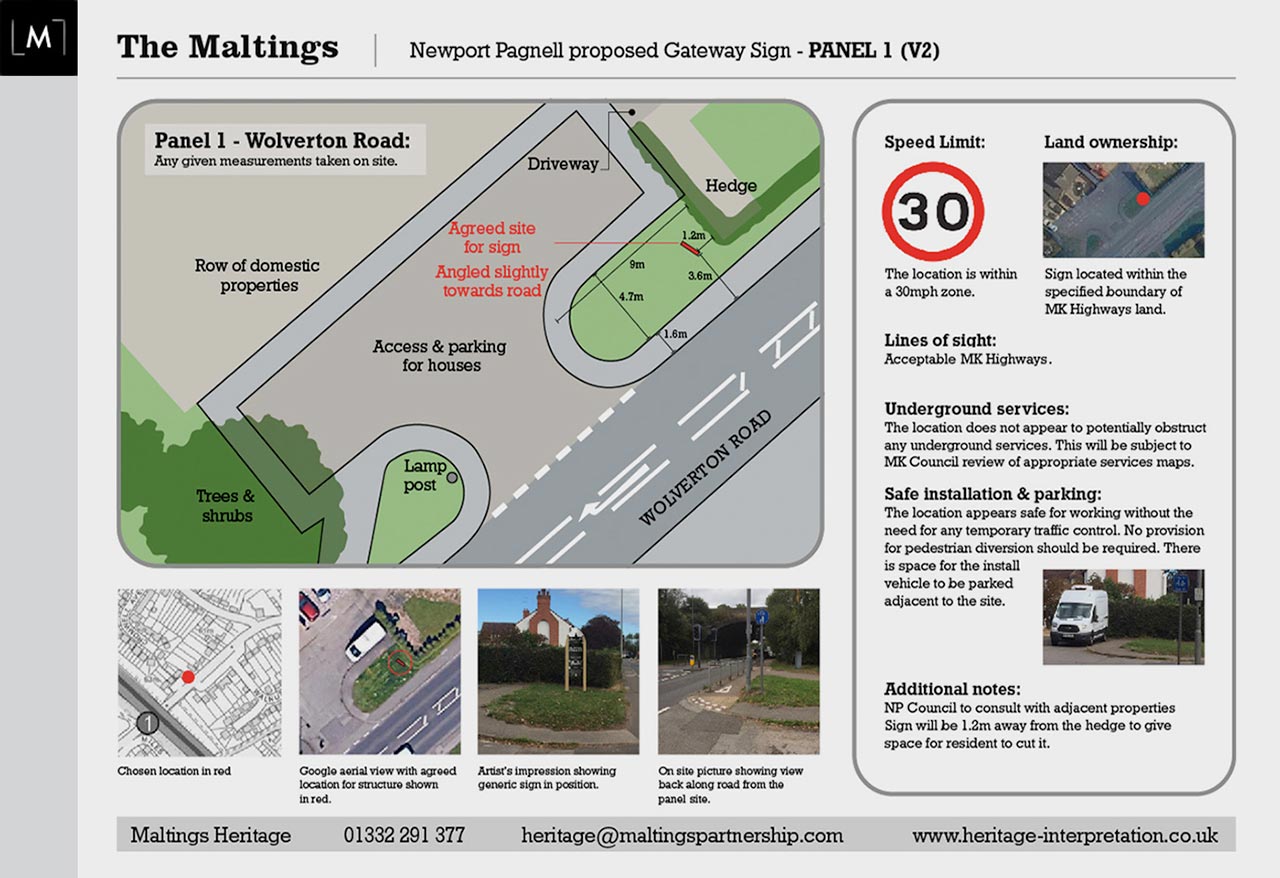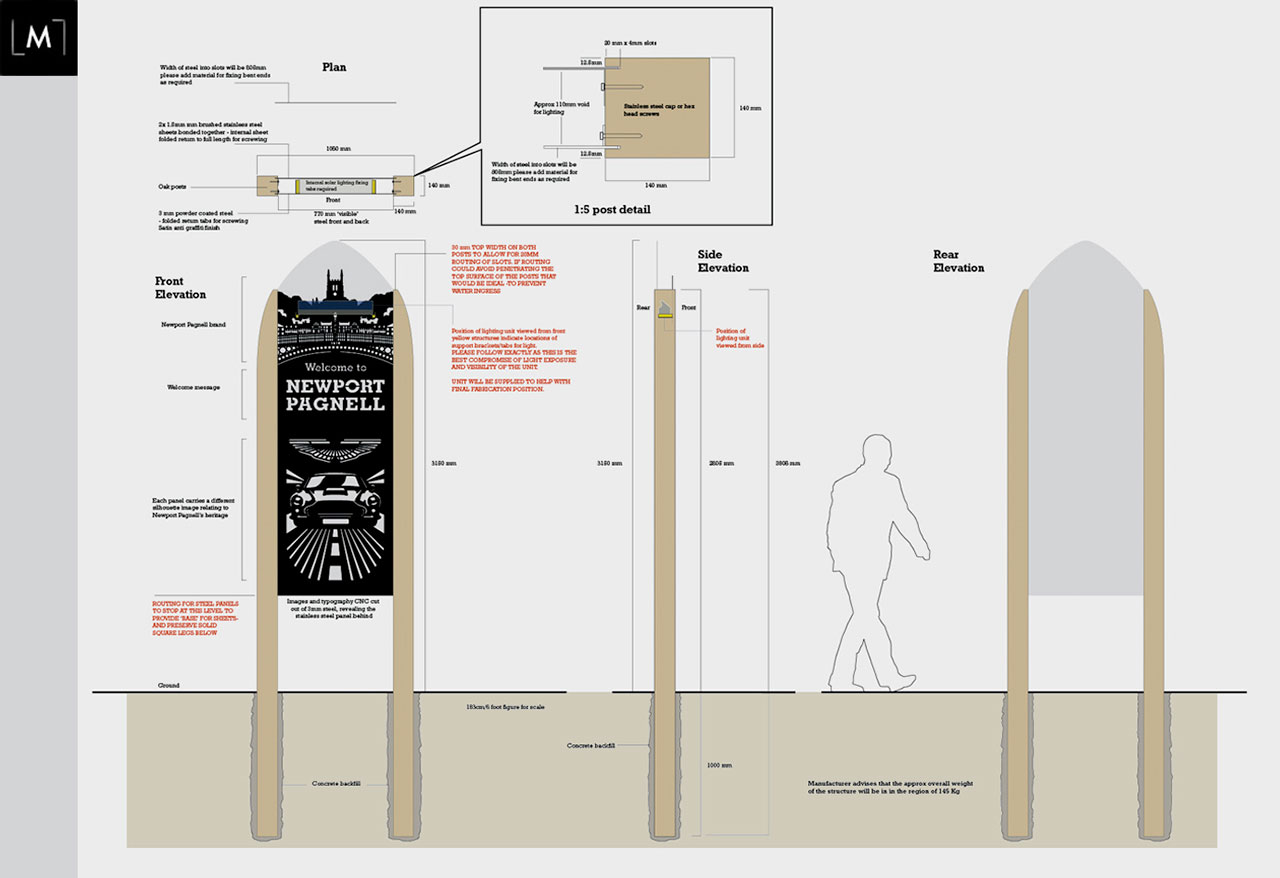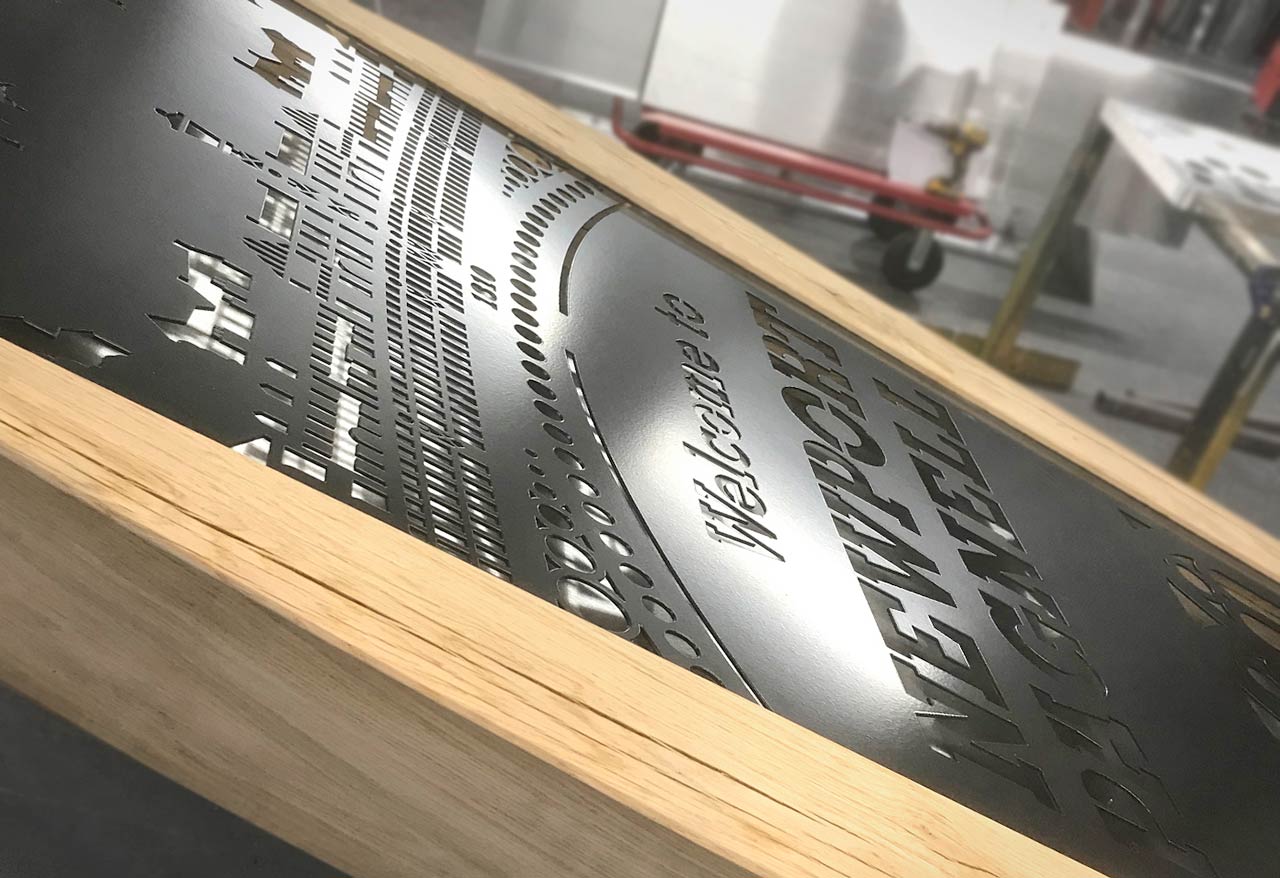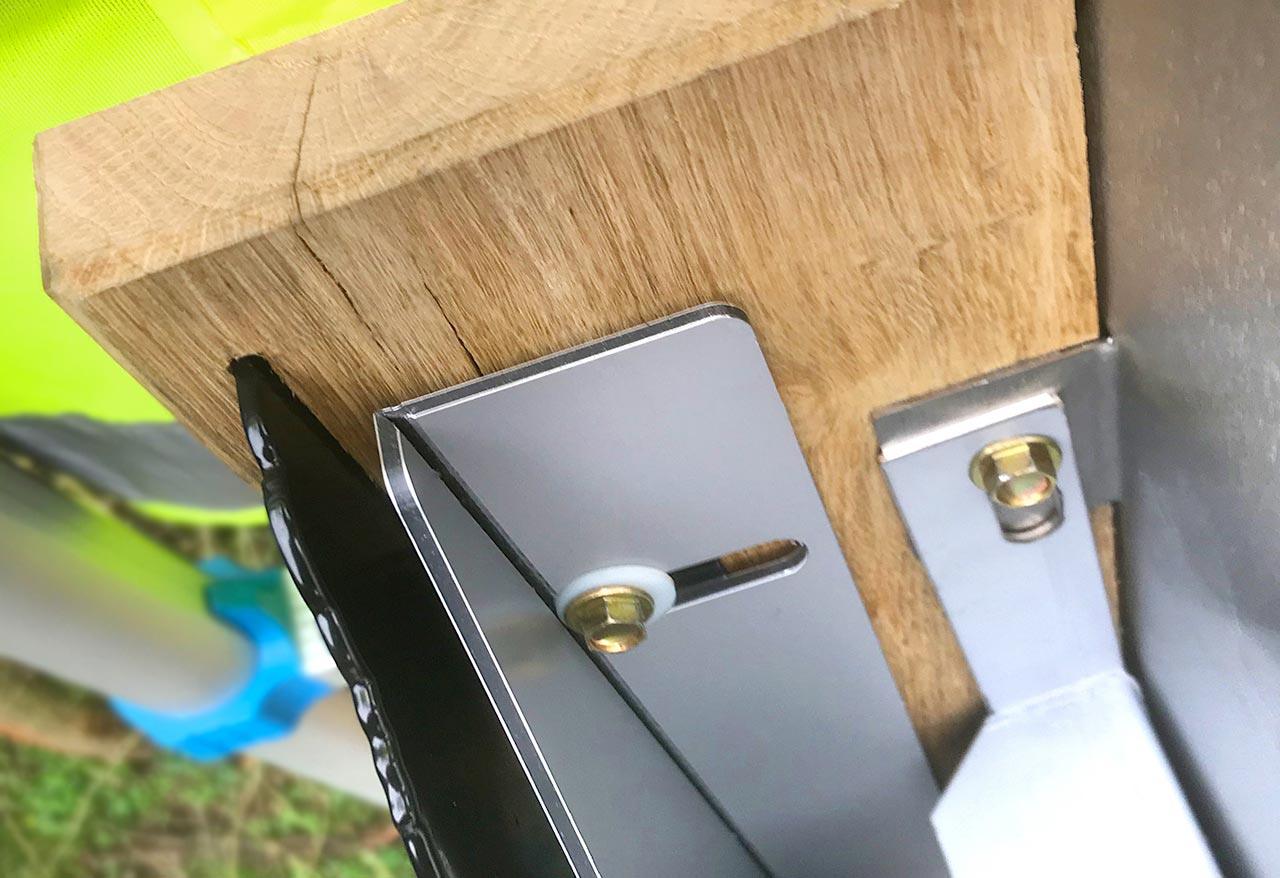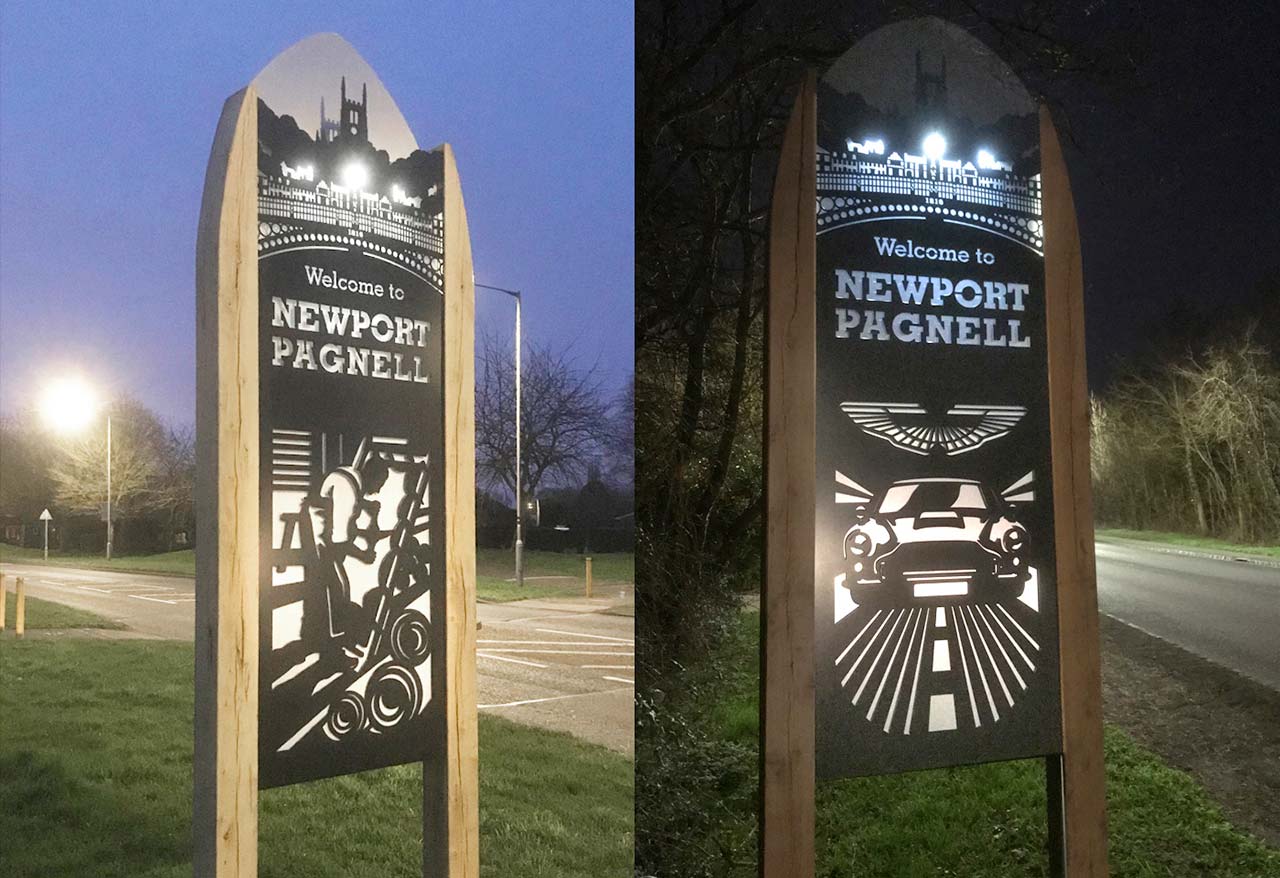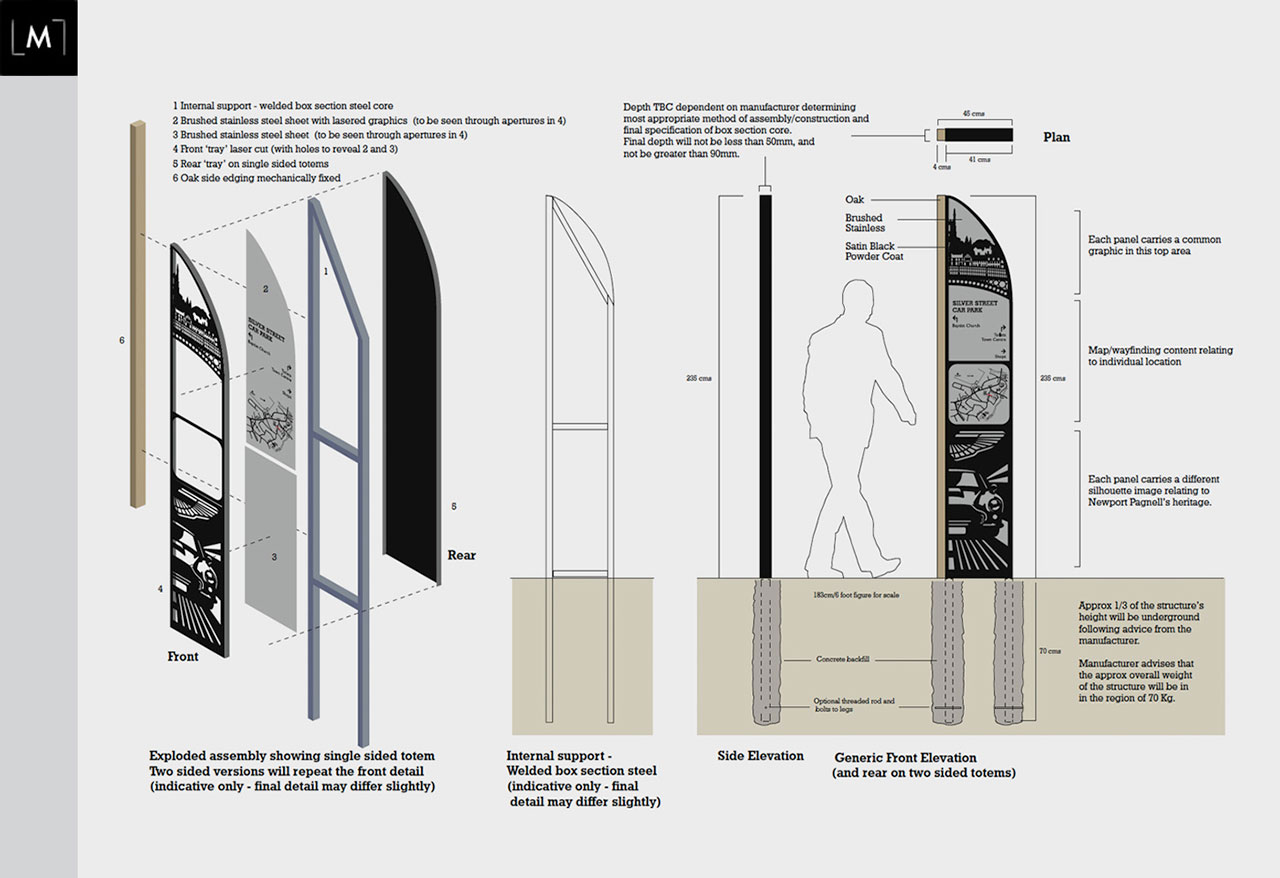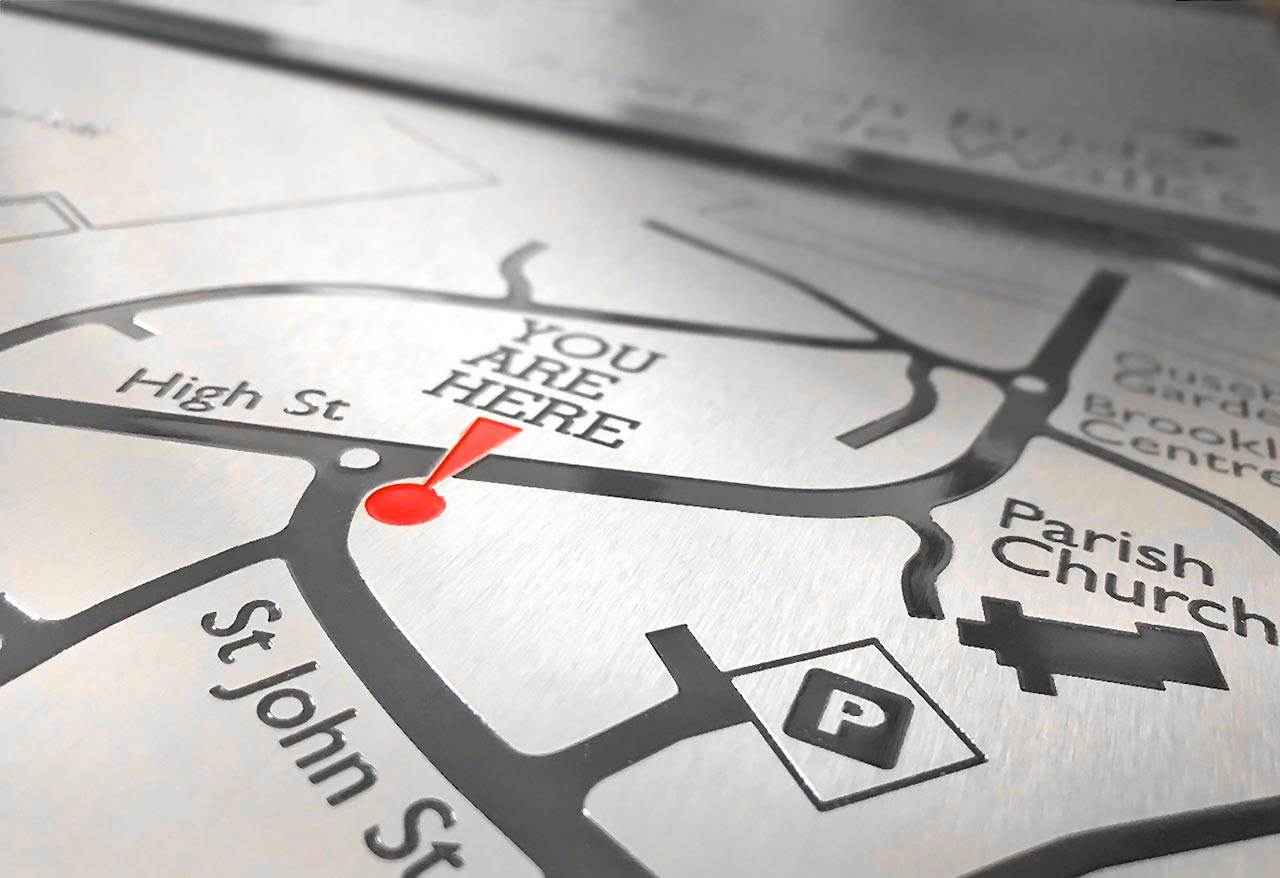Newport Pagnell
Turning signage into interpretive public art.
A wonderful opportunity to raise the standard of signage and way-finding. Proving there’s more to Newport Pagnell than Aston Martin.
STEVE CAPSEY
(Partner – Maltings Heritage)
Newport Pagnell Town Council received a significant amount of Section 106 funding that was specifically allocated for public art. They launched a competitive selection process to find a supplier who could deliver seven innovative town gateway structures and six way-finding signs that would also serve as public and interpretive art. These would be followed by a second phase of the project – yet to be commissioned – being the design and delivery of a town heritage trail, to include interpretive lecterns, leaflets and interactive and augmented reality digital media. Five creative teams were shortlisted to develop and present concepts, and following a rigorous process of council review and public consultation the Maltings emerged as the clear first choice to implement the project.
We proposed that each gateway structure depicted an original illustration inspired by Newport Pagnelll’s heritage, together with a common welcome message and graphic icon of the town’s famous iron bridge. Structurally all seven gateways were identical, elegantly specified with seasoned, natural oak posts and satin black and brushed stainless steel panels – materials selected for their maximum durability, quality and beauty. We carried out a series of consultative activities and presentations to allow the community to contribute to the final selection of themes for the heritage illustrations. These included local car manufacturer Aston Martin, the M1 services (the first in britain), the English Civil War, Coaching and Vellum-making among others. Installing such large structures close to highways required a rigorous and exhaustive process of planning permissions, structural compliances, highways approvals and investigation of underground services prior to final permits being issued for the works. An advanced manufacturing process involved laser cutting our digital designs into 3mm carbon steel which was then powder coated in an anti-graffiti satin black. The illustrations were created as ‘holes’ in the front black panel which revealed the brighter, lighter panel behind, enhanced at night with solar illumination cascading into the gap between the two. Precision manufacturing by specialists and a very flexible design allowed us to fine tune each of the gateway structures with inserts to maximise visibility in each of the seven locations. In some we specified a bright brushed composite metal insert, while in others we used highly reflective 3M Diamond Grade material that fully enhanced night-time visibility in less well illuminated environments. Way-finding structures were later designed and approved through a similar process and we created samples to test their visibility and durability in all conditions. These are awaiting manufacture and installation.
This has been an exciting and extremely challenging project, and the structures created thus far show how a highly creative approach can elevate even practical elements of street furniture beyond simple finger posts and signs. The final stage of the project – the HeritageTrail – we hope will commence later this year. Our aim will be to use interpretive panels, a trail leaflet, and digital media accessed through smartphones and tablets to effectively turn the town into it’s own living museum, expanding on the themes illustrated on the gateway structures. Watch this space!

